10 Tie-dye tips: Do and don’t checklist
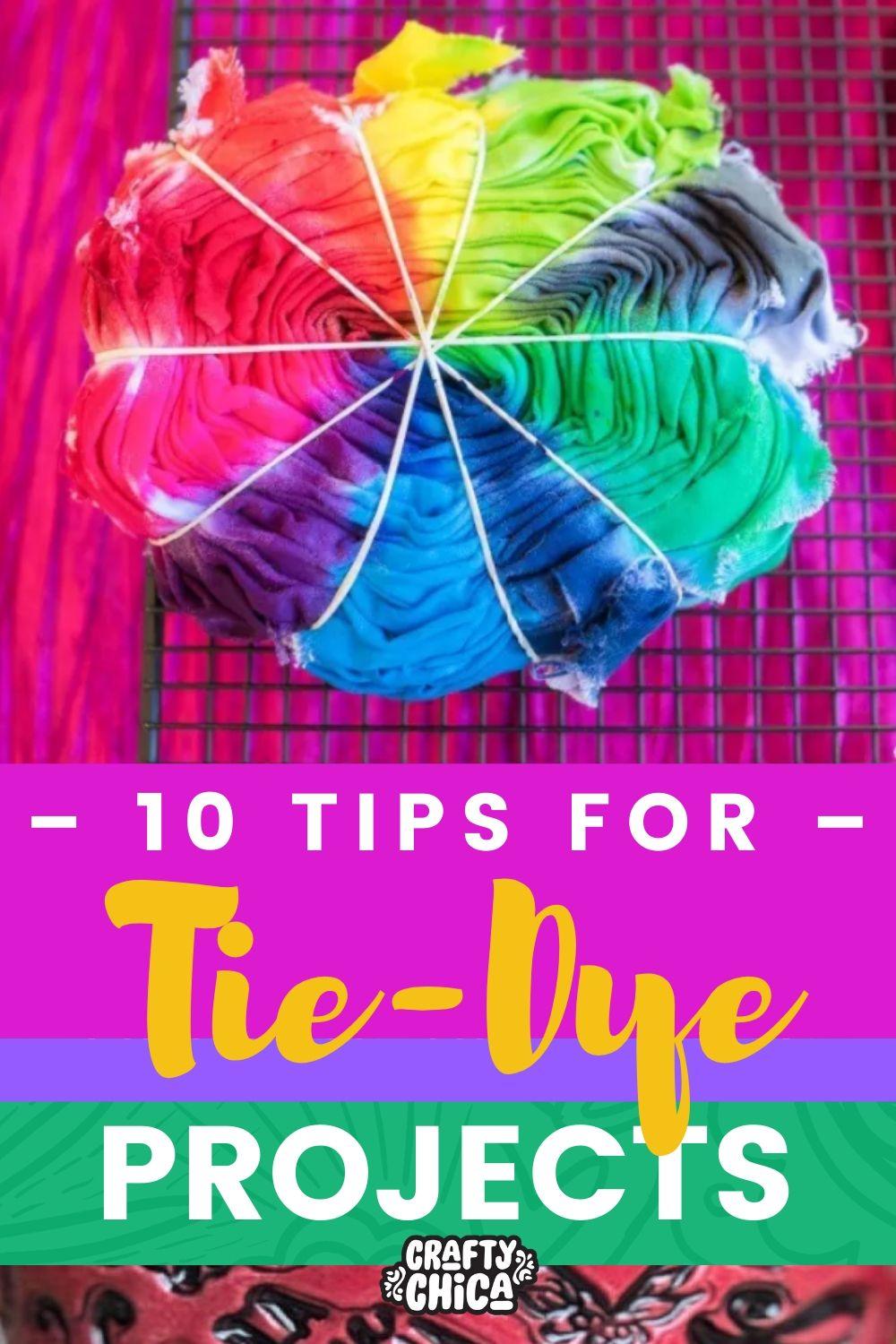
Many of you have asked me questions about tie-dying, so I thought I’d put together this list of 10 Tie-dye tips for the perfect outcome! Actually, there are more than ten tie-dye tips, I lost count!
I spent several years as a spokesperson for one of the best-selling tie-dye lines. I loved it because I learned so much about what works, and all different techniques to end up with beautiful results!
One thing I also learned was what not to do.
When a tie-dye project flops – it sucks. All that time and effort and then to open up the folded fabric to underwhelming results…it’ll make you want to give up.
But don’t! There are steps you can take to ensure you end up with an awesome outcome.
Here are my favorite tie-dye tips to help you along with way! And check out my shopping list for all things tie-dye!
Set up:
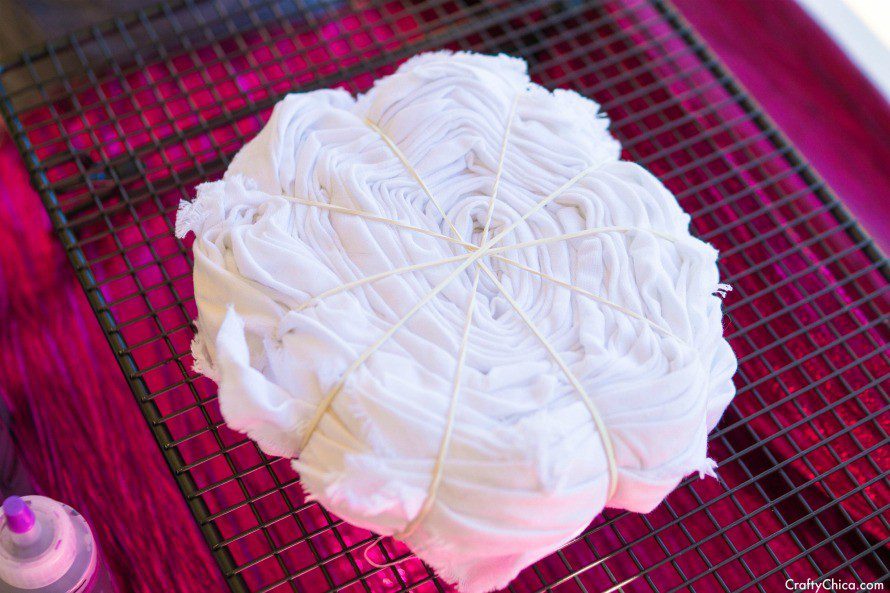
You’ll not only need a roomy work area to create your tie-dye, but also an area to set your project aside to cure. It takes six hours for the dye to set permanently.
I’ll start by lining my work area with a plastic cover (or paper needing recycling – wrapping paper, newspaper, packing paper, etc), then create my project, cover it and then set it in the garage, on the table on the patio or even on top of the washer or dryer.
Beyond the basic supplies
Aside from gloves and table coverings, your project will look better if you rest it on a raised baker’s rack as you add the color. This prevents the dye from spreading where you don’t want.
Tongs work great for carefully picking up your project and turning it so you can color the backside.
Damp vs. wet fabric
Did you know your project will have a completely different look depending on how wet your fabric is? If you want sharp lines, keep your fabric dry, however, if you are working with heavy fabric, like bulky t-shirts, the dye likely won’t travel through as deep as if the fabric is wet. You’ll end up with a lot of white areas.
I usually start with damp fabric and I keep a spray bottle of water on hand to keep it moist as I add the color.
You don’t want it soaking wet because then the dye will spread too much and bleed where you don’t want it. It will also water down the colors.
That leads to the best practice of…
Prewash your garments before tie-dyeing
This will remove the sizing and the stiffness of the shirt. If you try to dye the shirt without washing it first, the dye might roll right off!
Wash on the basic cycle, then remove, shake out and dye. It’s the perfect amount of dampness!

Rubberbands will do but zip ties are even better!
Every tie-dye kit will come with rubber bands, these are great for first-timers. But once you get rolling, you’ll want to upgrade to zip ties. You’ll get much cleaner lines and they are easier to attach and remove.
Wear gloves
Use plastic gloves, rinse them (while wearing) as you work so prevent cross color contamination. And have an extra pair ready as back up! The dye will stain your skin.
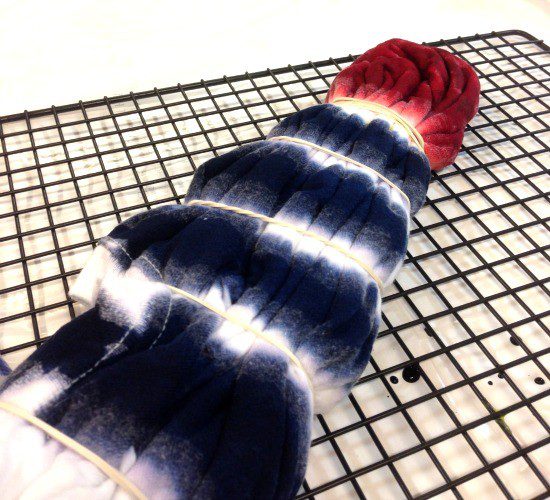
Spacing
Since your fabric will likely be wet/damp, the dye will spread. Keep this in mind as you add the color. Leave a little bit of spacing between each color. Not too much, but just enough, maybe a centimeter or so (the space of the rubber band is perfect).
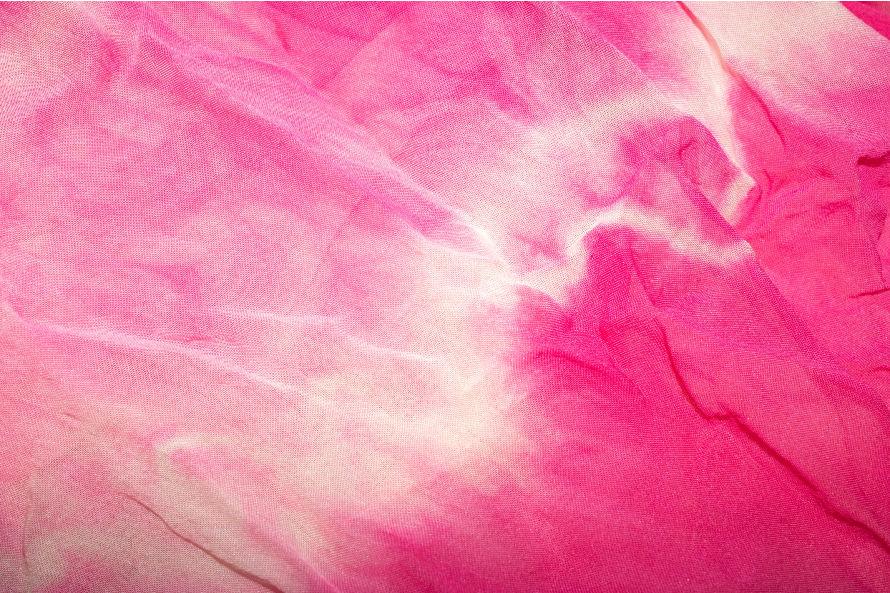
Practice, practice, practice
Okay if you are tie-dyeing for the first time just for fun, you can skip this part. But if you really want to learn the craft and the different techniques, pick up a yard of 100% white cotton fabric. Cut it into 12×12” swatches so you can play with folding and arranging color.
This is also a good idea if you want to dye something big like sheets or a dress.
Seriously, once you practice, you’ll know what to do and what not to do for your big project!
Choosing fabric
Natural fabrics work best. Cotton, rayon, hemp, linen, silk, wool. Always read the tags, look for 90% cotton. I stay away from 50/50 blends because the colors do not come out as bright.
Tie-dye will not work on polyester, lycra, spandex, etc. I learned this the hard way in my early days!
My faves: Silk, rayon, lightweight cotton. They come out so crisp and bright!
Check out my tie-dye shopping list here.

Fancy folding
Whether you are making a swirl, an accordion fold or crumpling, do you best to make clean folds. This will prevent large blobs of color. The beauty of tie-dye is the effects from folding, so take time to make sure your creases are sharp and even.
Know the color wheel
Keep like colors together, so if they bleed it will create a beautiful new shade! Here is a link to a guide to help you! https://decoart.com/blog/article/318/color_theory_basics_the_color_wheel
Red and yellow together make a vibrant orange.
Yellow and a touch of teal will make green.
Pink and purple will make a pretty fuschia.
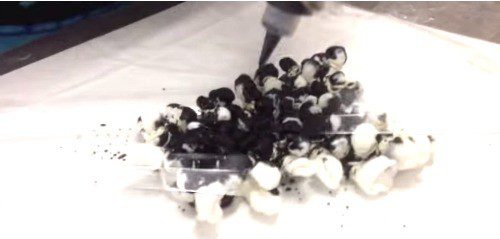
Cover your garment as the dye sets
This is because the heat will help the dye set faster and stronger. It doesn’t have to be super tight, just loosely place a cover over the whole thing. It also prevents debris from contaminating your hard work!

Rinse and wash
This is really important. Put on your gloves and take your project to the sink after it has set for at least six hours. Before removing the ties/bands, rinse with lukewarm or cool water – not hot. Way less messy this way!
Then remove the ties/bands, open your garment and rinse until the water runs clear.
Run through the washing machine on cold water, hang dry.
Wash separately from other clothing items the first couple washes, just to make sure it doesn’t bleed.
Clean up!
Wipe away any spots on the table, etc. The dye will reconstitute and spread!
I hope these 10 tie-dye tips help you. Tie-dye is super fun and it doesn’t have to be messy, it’s such a great summer activity for all ages and skill levels.

More tie-dye tips and ideas!
Start with black and white cotton fabric, adding color will make it more interesting!
Don’t want rainbow? Use one color.
Visit thrift shops or second-hand stores for cotton slips and blouses to dye.
Dye silk scarves, socks, table cloths, curtains, shoes or pillowcases for something different!
Try natural items for dye, like avocado pits, blueberries, tea or coffee grounds.
Check out my other tie-dye posts here!

The post 10 Tie-dye tips: Do and don’t checklist appeared first on The Crafty Chica! Crafts, Latinx art, creative motivation.
